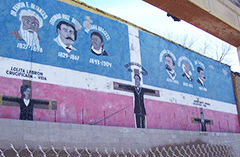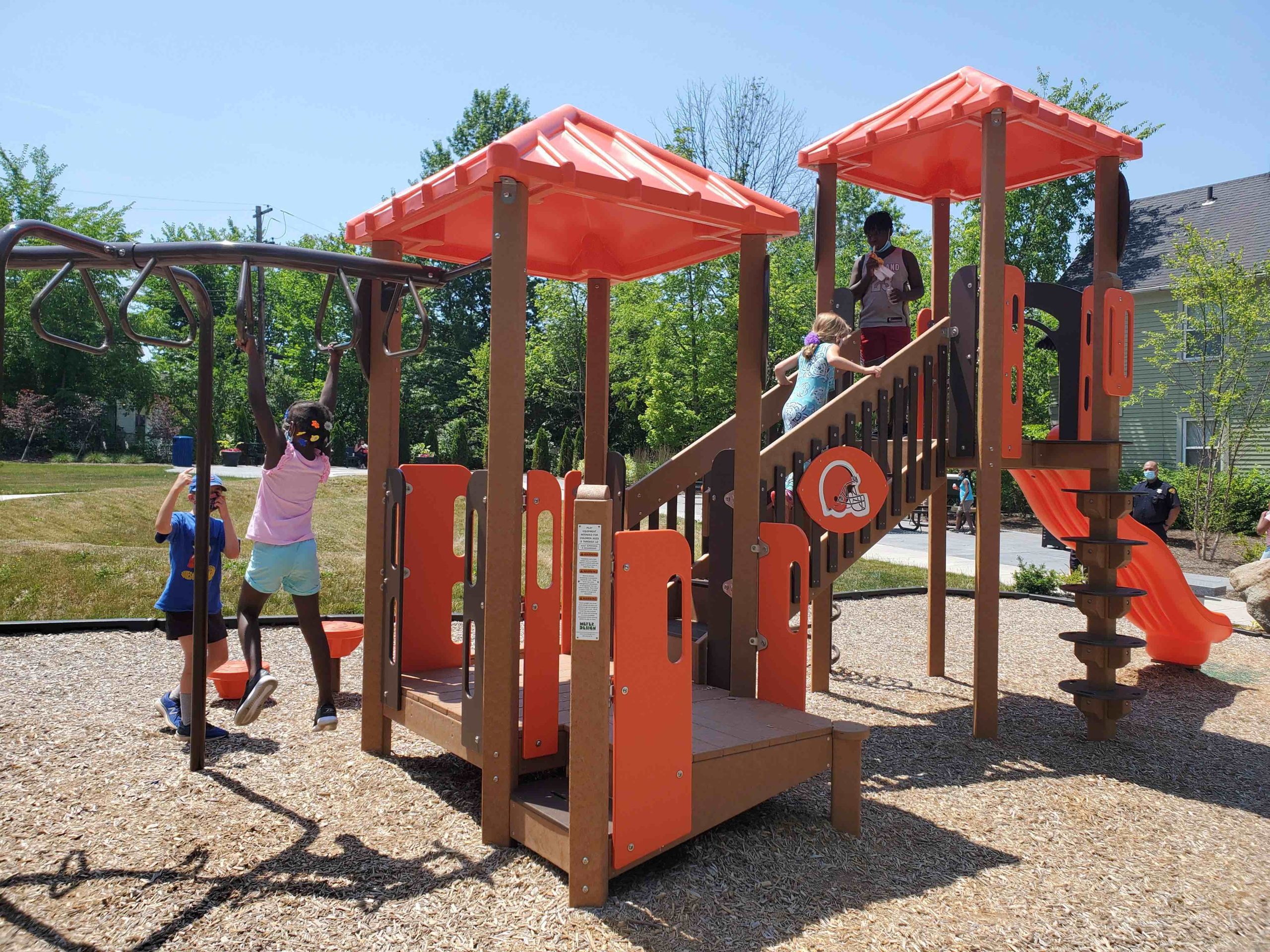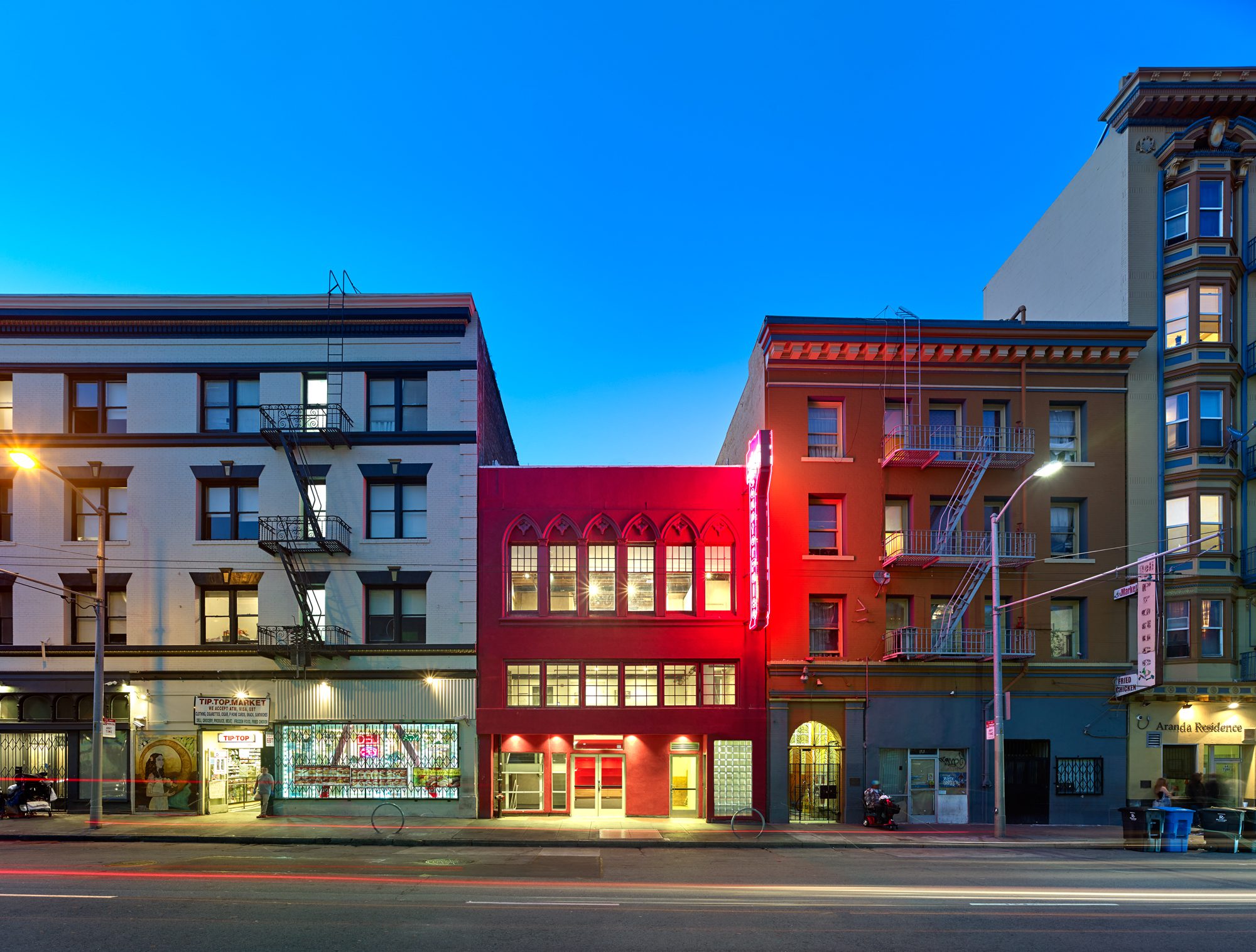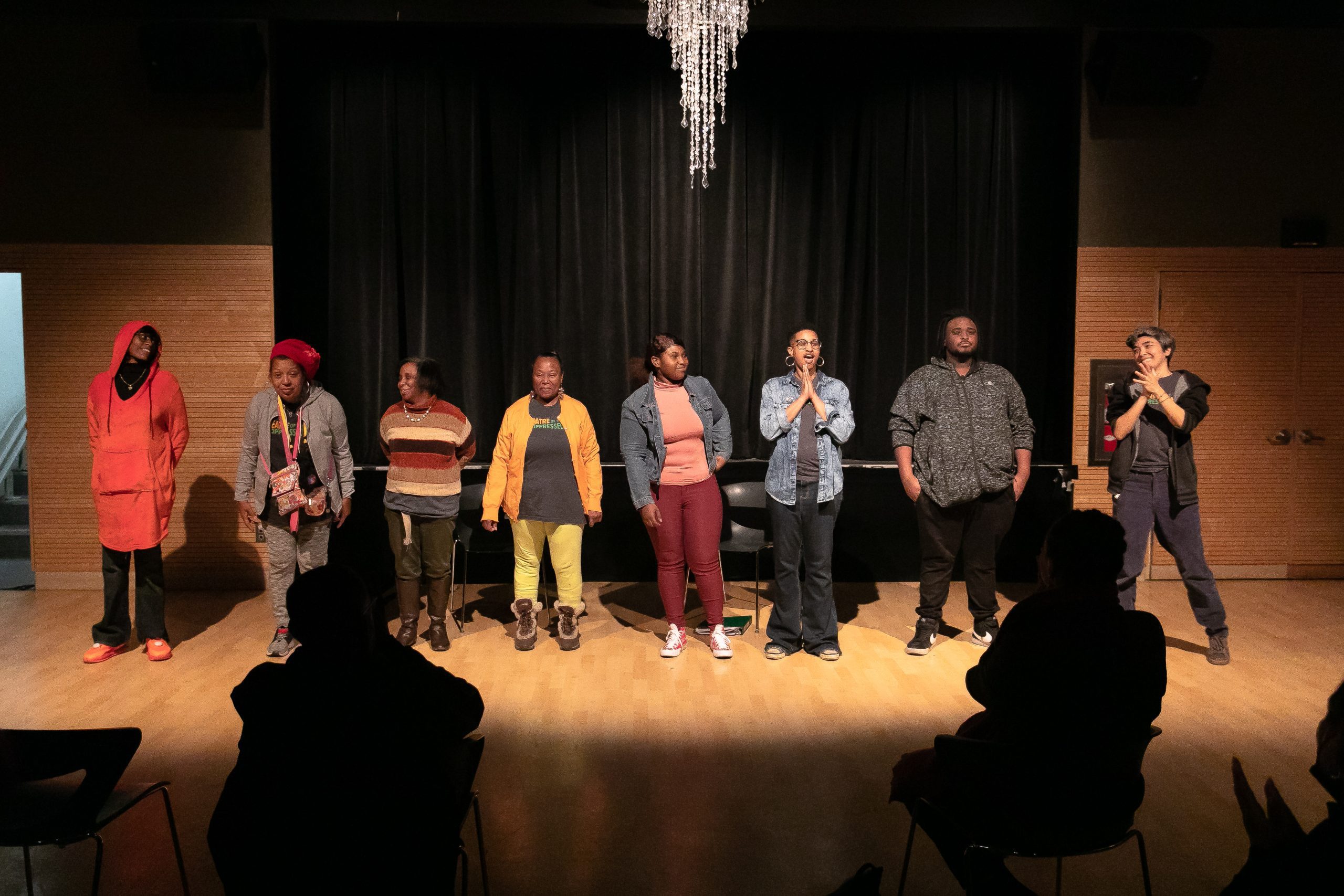
“La Crucifixion de Don Pedro,” the oldest Puerto Rican mural in Humboldt Park. Photo courtesy of https://brookeakins.50megs.com
There is an exceptional amount of public art on Paseo Boricua, a four-block stretch of Division Street bisecting Humboldt Park, in the heart of Chicago’s Puerto Rican community.
In July, I spent about an hour on Paseo Boricua with Eduardo Arocho, a longtime local activist and the executive director of the Division Street Business Development Association. Standing under the 56-foot-high mast of one of two huge steel Puerto Rican flags that arch over each entry to the corridor, Arocho catalogued the creative spaces contained in the half-mile stretch: “We have 18 murals on this street alone. . . we have buildings with the colonial architecture of Old San Juan. . . we have five street festivals. The list goes on in terms of how we have continuously been claiming space.”
Claiming space is the lifeblood of Arocho and many of his fellow community leaders; the ascribed importance explains the quantity. The area surrounding Paseo Boricua is not exclusive space, but in a gentrifying part of the city, it is undeniably—and perhaps unavoidably—contested space.
This year, a group of locals (including Alderman Roberto Maldonado) successfully fought for the removal of Riot Fest, a punk rock music festival that had brought tens of thousands of people into Humboldt Park over the prior three Septembers. In an op-ed, activist Lynda Lopez called it “a victory against gentrification.”
Why fight for months to stop a three-day event? Then again, why fight for over 10 years to preserve and restore the neighborhood’s oldest mural, which Arocho and his allies did in the face of a recurrent plan to cover it with a condo building on the adjacent vacant lot? (More on that in my next post.)
The vitriolic response to Lopez’s op-ed seems to be a clue to the answer. One commenter wrote:
“The old residents of Humboldt Park miss the days when you could purchase a steady diet of heroin and crack around the clock and find corpses in the park year round.”
Another wrote:
“Of course Maldonado doesn’t want too many white people moving in. He would quickly lose his position as the neighborhood changed. . . I think Maldonado’s next campaign election should be, ‘Keep Humboldt Poor!’”
Gentrification and Humboldt Park
The intrinsic value of creative placemaking is not in great dispute, but many made places are. Different people and communities often have different visions for spaces they cohabitate. Often, they also have different levels of entitlement, accompanied by mutual distrust. Often, the distrust is deeply rooted in experience. Neighborhoods therefore become messy. In spades, these dynamics exist in Humboldt Park.
Advocates and practitioners of creative placemaking sometimes operate with admirable ideals of harmony and diversity. If practiced via authentic processes, with equal input from all affected communities, these approaches can help resolve some of the messiness. However, they also risk shrouding conflicts that may, in fact, be quite warranted.
In his dissertation, “When the White People Come,” Jesse Mumm explains why many Puerto Rican community members choose to plant a very defiant flag in the Humboldt Park neighborhood—both literal and figurative—in the face of an influx of new residents. Relying on substantial field work, Mumm writes that much of the defiance is founded in the communal experience of having been economically displaced from neighborhoods due east, such as Lincoln Park and Wicker Park. Few signs remain of the Puerto Rican communities that once existed in both places.
Many gentrifiers may not be able to empathize with the experience of losing shared history, shared pride, collective ownership, social capital, and political power (the same, incidentally, may apply to those who argue vehemently in favor of engineered deconcentration of poverty, a subject for another day). But for marginalized communities like those in Humboldt Park, it can be painful—the “root shock” that Mindy Thompson Fullilove has written on extensively. In this context, the art and the celebrations can be seen as protection against the threat of another trauma.
“If you at least have a history and sense of your culture,” Arocho told me, “then you have a chance.”
Then there is another matter: the behaviors and perceptions of a critical mass of young white gentrifiers. Mumm describes this population in the context what he calls “intimate segregation.”
“White newcomers learn to police local spaces, social life, and neighborhood narratives to maximize a range of social and economic privileges. In turn Latino predecessors respond with overt racial significations and daily inhabitance and transformation of urban space on their own terms and in their own particular and heterogeneous interests.”
While his field work revealed a mix of individuals across demographics, Mumm encountered a notable level of paternalism, fear, or outright hostility expressed by such newcomers. Recurrently, they judge their Puerto Rican neighbors as criminal elements to be removed, bad influences on property values, and barriers to the creation of the type of environment they prefer. They also often see their own presence as the inherent solution to local issues of poverty.
At times, Mumm teeters on the edge of his own trap of generalizing behaviors within ethnic groups (a danger for the lot of us). Nonetheless, his examples are powerful and unmistakable. By broaching an uncomfortable subject, he confronts a reality that many of his fellow researchers do not: gentrification cannot be divorced from prejudice and entitlement that often underlies the process. From the vantage of the preexisting community, creative defiance seems justifiable in this context as well.
The creative expressions—the flags; the murals; the festivals; the food; the attire of pedestrians—both anticipate and respond to conflict. They do not reject people of other cultures who accept the safe spaces that an oft-disenfranchised community has crafted for itself over several decades, but they do defy those who passively and actively undermine these spaces and the empowerment they represent.
For such newcomers, a more neutral creative placemaking alternative might foster their greater sense of safety and integration (such spaces are indeed emerging, and would be doing so more quickly if not for the fact that so many buildings on Division Street are Puerto-Rican-owned). This process would also be an unequivocal loss of place for many longtime residents.
There appears to be limited middle ground here. The underlying conflict would exist in either scenario—the distinction is a matter of whose grounds the conflict is on.





Comments